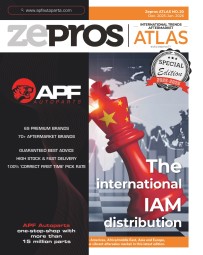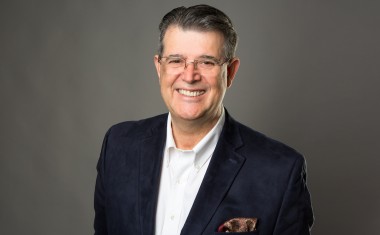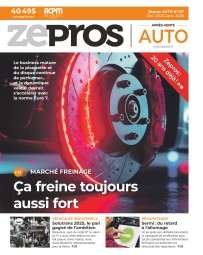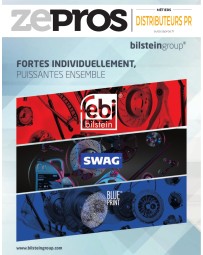
F. Katsardis, Temot International: “Cooperation, commitment, competitiveness”

Despite the turbulence of a tense economic environment and destabilising geopolitical tensions, Fotios Katsardis describes a high-performing, agile aftermarket ecosystem, supported by ITGs that rise to the challenge.
Fotios Katsardis: It was a transformative year, marking the beginning of a new era for the Temot organisation. With 116 distributors in 106 countries, we have established very good coverage, but with the limits of our model, which is selective and concentrated on private, mainly family-owned, structures. Our aim is to achieve greater consistency without jeopardising the competitiveness of our shareholders.
In 2025, we know that it will be impossible to drive all the regions with the same speed. In the Temot model, we apply the C³ formula: cooperation, commitment and competitiveness. The differences in national markets, cultural mindsets and business models make this alignment complex. But by focusing our efforts on clusters, we are helping to create clear channels for cooperation between suppliers and shareholders.
F. K.: Latin America and Asia! Both regions combine impressive growth despite ongoing crises (exchange rate fluctuations, inflation, social and political issues). Latin America continues to shine with its rapidly expanding aftermarket, fuelled by an ageing fleet and strong economic activity in key countries. Asia remains an unrivalled powerhouse, driven by a growing vehicle population and robust economic growth. China is the Eldorado, a unique case within the global automotive business, and in 2024 became the world's largest vehicle fleet... albeit with a motorisation rate that is still very low.
While less fragmented, Europe also demonstrated remarkable dynamism, with growth of 14%, varying from country to country. This growth shows the resilience of SMEs to a severe deterioration in competitiveness, and testifies to the robust demand for spare parts, despite the economic uncertainties. We are at the ‘sweet spot’ of the European spare parts market, and we expect to maintain this position in the coming years.
F. K.: The outlook remains positive. The fundamentals underpinning the sector are strong: average mileage is rising, vehicle age is rising, and, despite everything, new vehicles are continuing to arrive on the market.
F. K.: Although these challenges are having an impact on the global economy, the direct effects on the aftermarket ecosystem remain limited. The aftermarket has proven its resilience over the decades. While there are obvious challenges ahead, wholesalers have historically shown remarkable adaptability, consistently finding alternative sourcing options to mitigate these impacts. Globally, if China faces significant obstacles, particularly in the US, it will undoubtedly redirect its efforts to strengthen its position in Europe. This could reshape the competitive landscape... The fact remains that even if geopolitical crises drive major macroeconomic shifts, the fundamental patterns of the aftermarket remain steadfast.
F. K.: For certain suppliers, they are becoming more structural than cyclical. This is particularly evident among those who are moving towards new technologies and away from legacy systems. If the transition is slow and the market does not provide scale, this could end up posing challenges for distributors reliant on products tied to older technologies. However, we have not yet seen suppliers disengage from diesel. And if this is to happen, the market will always be able to obtain supplies from alternative sources, which are currently sufficient and of high quality.
F. K.: Electrification will create opportunities for new entrants, particularly from China and India, where manufacturers are innovating rapidly and offering competitive prices. They are reshaping the competitive landscape and forcing established players to adapt. But this aftermarket is still very small. It's almost quaint to talk about it. Let's observe and prepare for the future!
F. K.: The rise of Chinese manufacturers is a reality that we cannot ignore. If Chinese vehicles are gaining market share, it is our role to support their maintenance by ensuring the availability of parts and services. We bring local expertise, a deep understanding of regional markets and customer behaviour, enabling us to offer tailor-made solutions that Chinese players may find difficult to replicate. However, European suppliers need to step up their efforts. Because although Europe has introduced customs barriers, this will not be enough to close the gap without remedying the technological imbalance. Innovation is the only sustainable answer. Through a competitive programme, European suppliers can work with warehouse distributors to secure diversified and reliable sources of EV components, while ensuring competitive prices and availability. Building alliances, shared platforms and investment in training and diagnostic tools will be critical. That said, the demonisation of Chinese manufacturers has gone too far. In a fair and balanced market, they have their place. Their progress is remarkable, and the IAM must adapt if it is to prosper with all its value-added partners
F. K.: Among our shareholders, we are seeing growing interest in EV-related components: batteries, charging infrastructure and high-voltage system maintenance. However, the transition is not uniform across the regions, and there is a disproportion between interest and real opportunity. But as a trading group, we need to facilitate access to training and tools to help our members adapt and establish partnerships with suppliers specialising in these technologies. Prepare those who are in early-stage EV markets and enable those in advanced markets to capitalise on the opportunity.
F. K.: We see disquieting announcements every day, especially from European manufacturers. And of course, we see them trying to leverage their position to keep control of ‘after-sales’ services, particularly in markets like Europe and North America through restrictive data sharing, proprietary diagnostic tools, captive parts... Electrification is adding another layer. But it's all happening without producing any real disruption for us. With the exception of Japan, the IAM is thriving with over 70% market share on most continents. That won't change until 2030.
TEMOT IN FIGURES
116 distributor members
55 garage concepts
12,500 garages bearing the brand
106 countries covered
$1.6 bn aggregate member revenue






